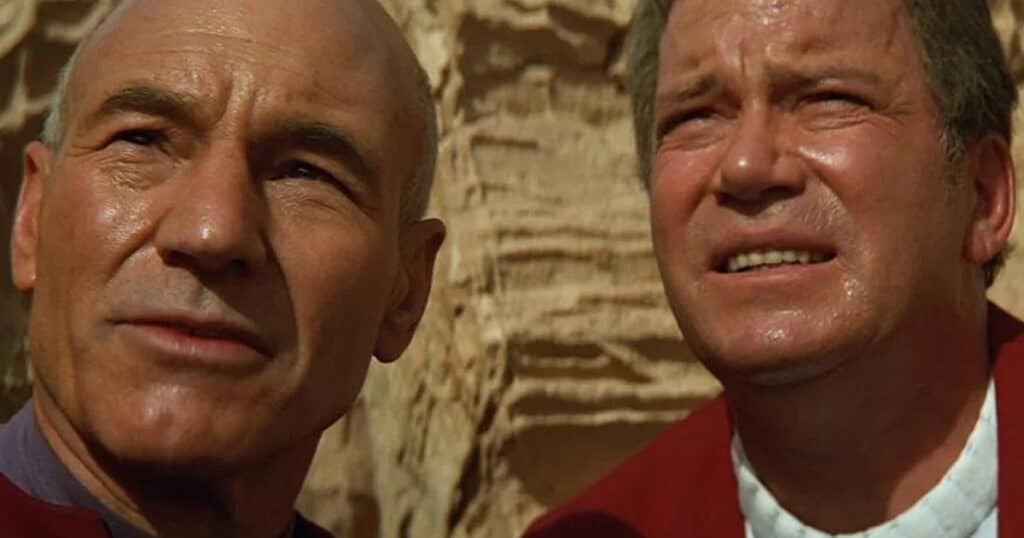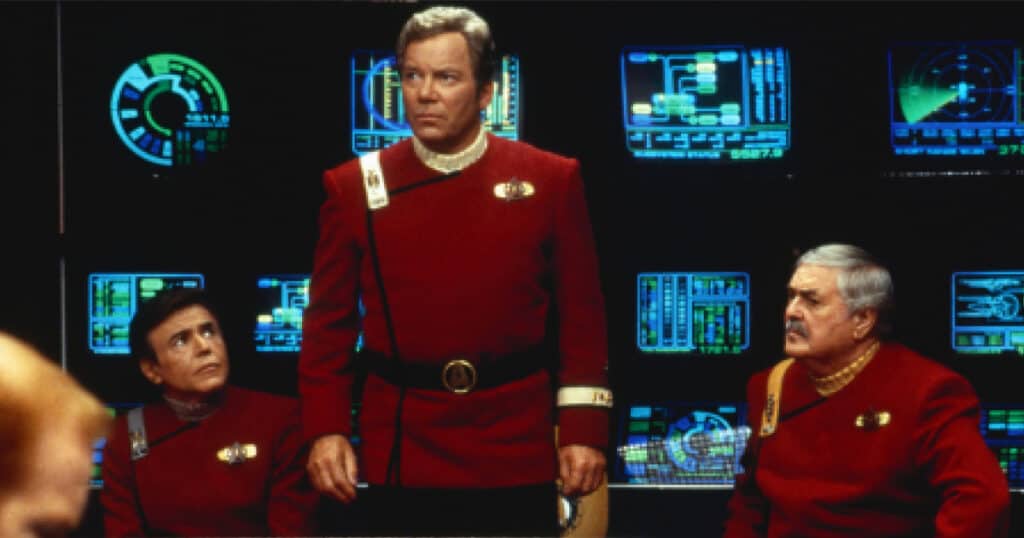Entertainment - Media News Watch originally published at Entertainment - Media News Watch
In 1991, the original crew of the U.S.S. Enterprise signed off with Star Trek VI: The Undiscovered Country, which received critical acclaim as well as the highest box office since The Wrath of Khan. The time was right for the new crew to take over the franchise after Star trek – The Next Generation ended its successful seven-season run. All involved were hesitant to make what could be perceived as a simple extended episode. It’s time to tackle Star Trek Generations! That’s right; it’s time to tackle Star Trek Generations
!To shepherd the Next Generation‘s move to the big screen, Paramount Pictures decided to give the reigns to the feature film over to Next Generation producer Rick Berman, who would enlist two of his best writers, Ronald D. Moore and Brannon Braga, to develop the screenplay. David Carson, the director of Yesterday’s Enterprise (one of TNG’s best episodes), was hired to direct. The studio deserves credit for letting the tv crew make their own movie. None of them had any experience in feature films. However, many of the Next Generation’s
episodes were considered near feature-quality, and the budget would be small – only $25 million, which was a fraction of what most big movies cost at the time.To help make the Next Generation gang seem feature-worthy, an ace movie cinematographer, John A Alonzo, who had shot Chinatown and Scarface, was hired, and the sets and models used to showcase the Enterprise-D would be overhauled. I.L.M. I.L.M. The uniforms were also to be reworked to look better on screen. However, some uniforms from Deep Space Nine, which looked better, were used. Jonathan Frakes and Levar Burrell borrowed theirs from Avery Brooks, who was of the same height and build as Colm Meany. It’s true that originally, Kirk, Spock, and McCoy all were supposed to be in the movie. You’ll see that Kirk, James Doohan as Scotty, and Walter Koenig as Chekov are all present on the maiden journey of the Enterprise-B where Kirk’s presumably fatal accident occurs. Leonard Nimoy turned down the role of McCoy because it was deemed too minor. DeForest Kelly was unable to get insurance due to his declining health. This is very obvious if you watch the film. For some reason, Chekov takes over sickbay even though he’s not a doctor. Scott, Chekov, and even Kirk had more screentime originally, but a daredevil opening sequence that involved Kirk performing a skydive at the last moment was cut. This scene was in both the comic book and novelization, and I was confused as to why it wasn’t included in the movie. Whoopi Goldberg who shocked the industry when she signed on to the show at the same time as she won an Oscar for her love of Trek, returned to the show with a larger role than usual. Malcolm McDowell is a cult hero thanks to his roles in
A clockwork orange
,
Blue Thunder, Time After Time, and many others. He has a comeback as the movie’s villain, Soran. It’s a mixed bag. It’s been said by many over the years that it feels like two episodes, and this is pretty accurate. Paramount was trying to hedge its bets, so it kept the film small. However, the budget eventually rose to a still affordable $35 million. It’s a better film than many people give it credit for. The story is good. Kirk dies heroically trying to save Enterprise B, which is commanded by Alan Ruck’s inexperienced John Harriman. The opening is a nice one, with Sulu’s daughter at the wheel. George Takei did not want to demote his character, because he was a captain in Star trek VI. Soran is a sympathetic villain who is determined to recreate an energy ribbon known as The Nexus that transports people into an idyllic paradise, where their dreams are realized. He wants to be with his family and is willing to kill millions in order to do so. This is bittersweet, given how the brothers reconnected in the famous episode Family
. He is sucked in to the Nexus when he fails to stop Soran. A version of Guinan, who lives in the Nexus helps him discover that Captain Kirk didn’t actually die in Enterprise B, but was sucked in to the Nexus. He convinces Kirk that their idyll should not come at the expense of millions of lives. Kirk then helps him stop Soran and dies in the process. There are several reasons. It’s paced as a two-part story, with an A-story led by Picard and a B’story that takes place on Enterprise D, where the crew is tangled up with the memorable Klingon antagonistesses from the series, Lursa, and B’Etor. The biggest special effect in the movie is the separation of Enterprise’s saucer, which will lead to a redesign for the next big-screen trek movie. The movie is a bit undercooked, but there are some good moments, including Brent Spiner’s turn as Data who is driven half insane by a new emotion processor that quickly goes out of control. It’s a fact that neither man compliments the others. They each have their own style. The movie does its best to make Kirk look like the alpha male hero he is, despite his old age, and to show him as the one who sacrifices himself for the good of the world. Picard is portrayed as a wimpy, but smart, character. In the next film First contact Picard was transformed into an action hero. He took on the Borg with a much more tougher performance. This, admittedly, did better in the cinemas. The fact that the same crew that worked on the show also worked on the movie could have been a hindrance. The film was made in just a few days after the show’s run ended. It’s a good start to

The Next Generation‘s big screen adventures. It’s a shame to say that, except for First contact
it would be a highlight of the adventures of the
Next generation crew on the big screen.
Entertainment - Media News Watch originally published at Entertainment - Media News Watch



